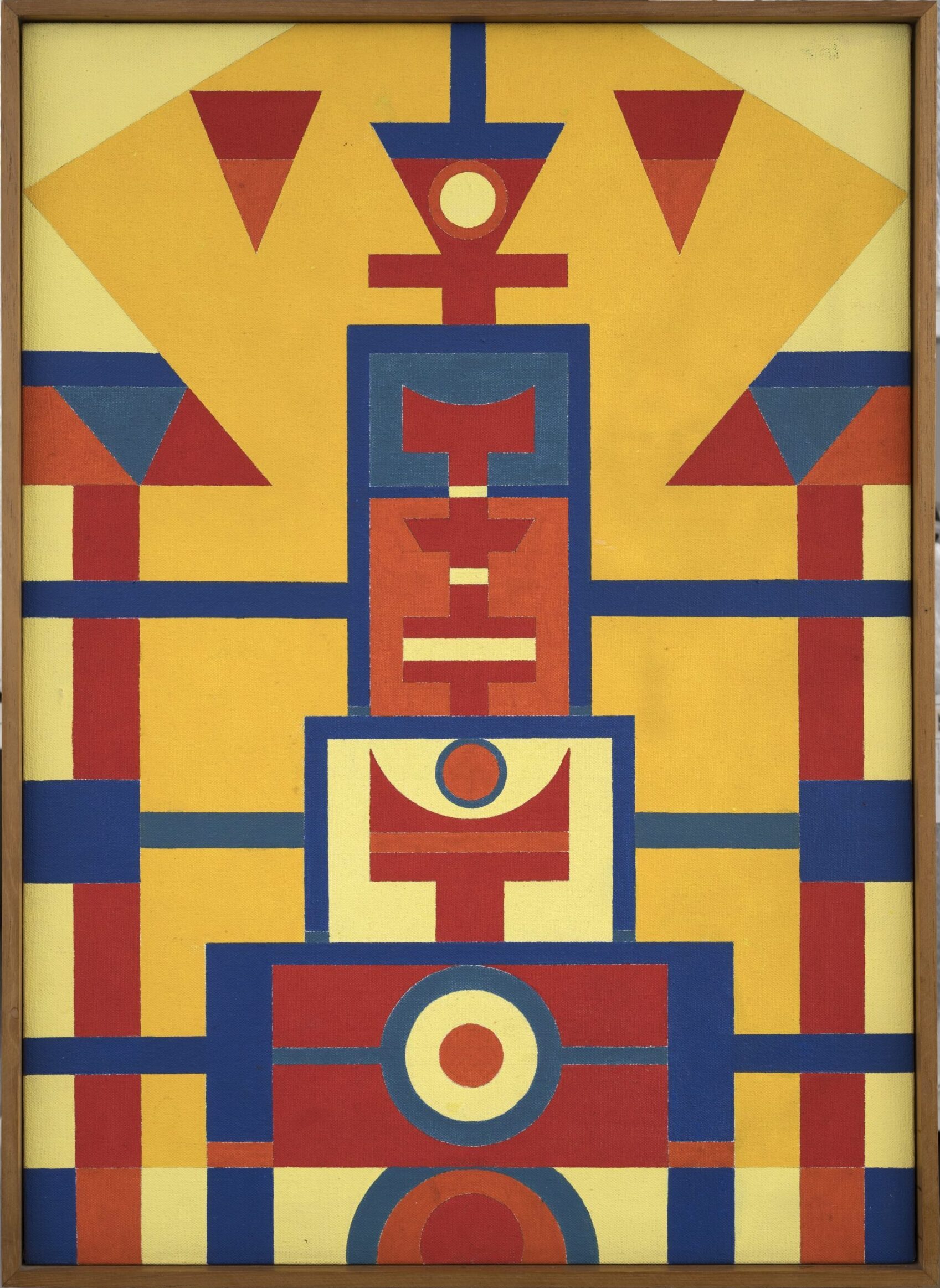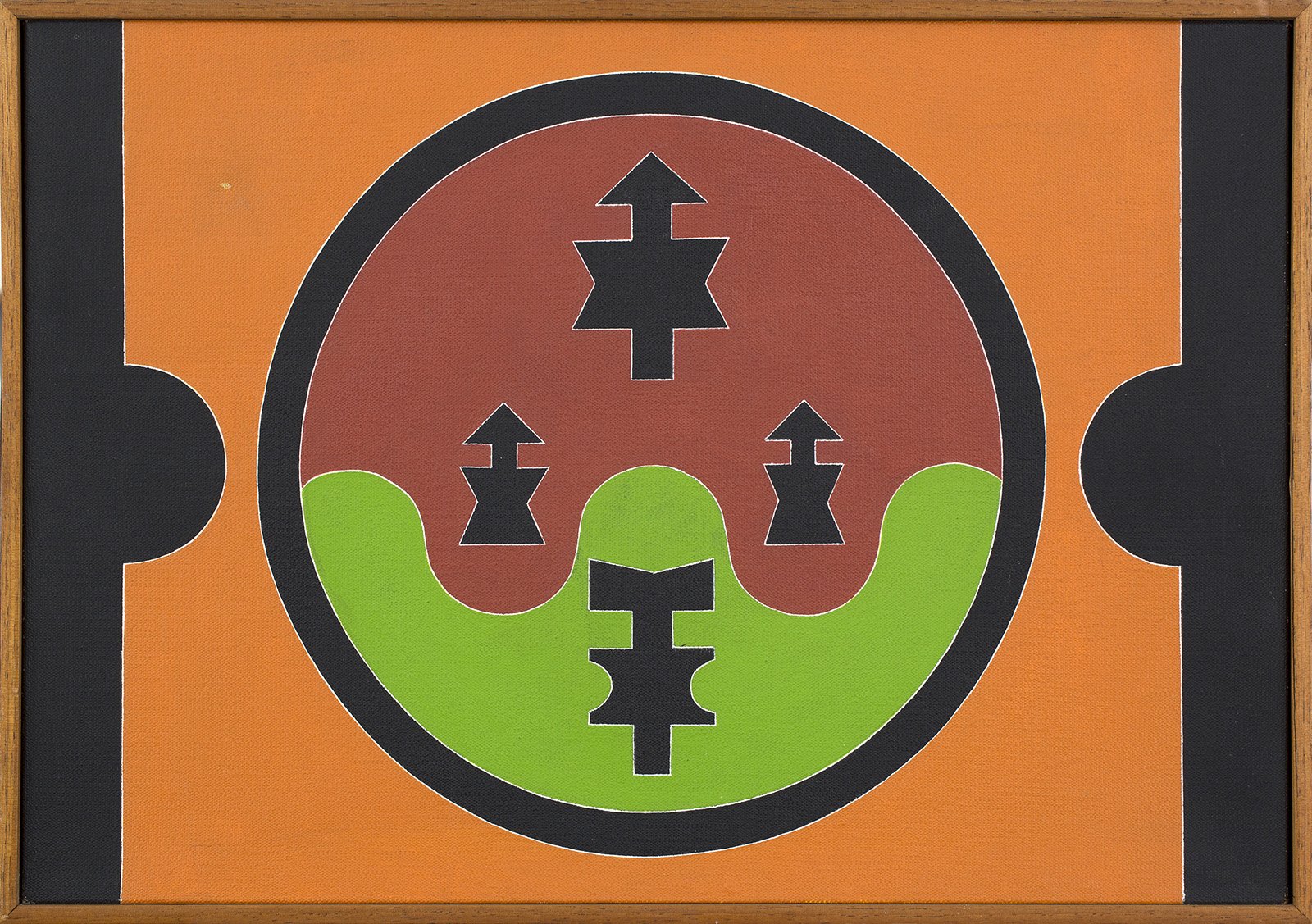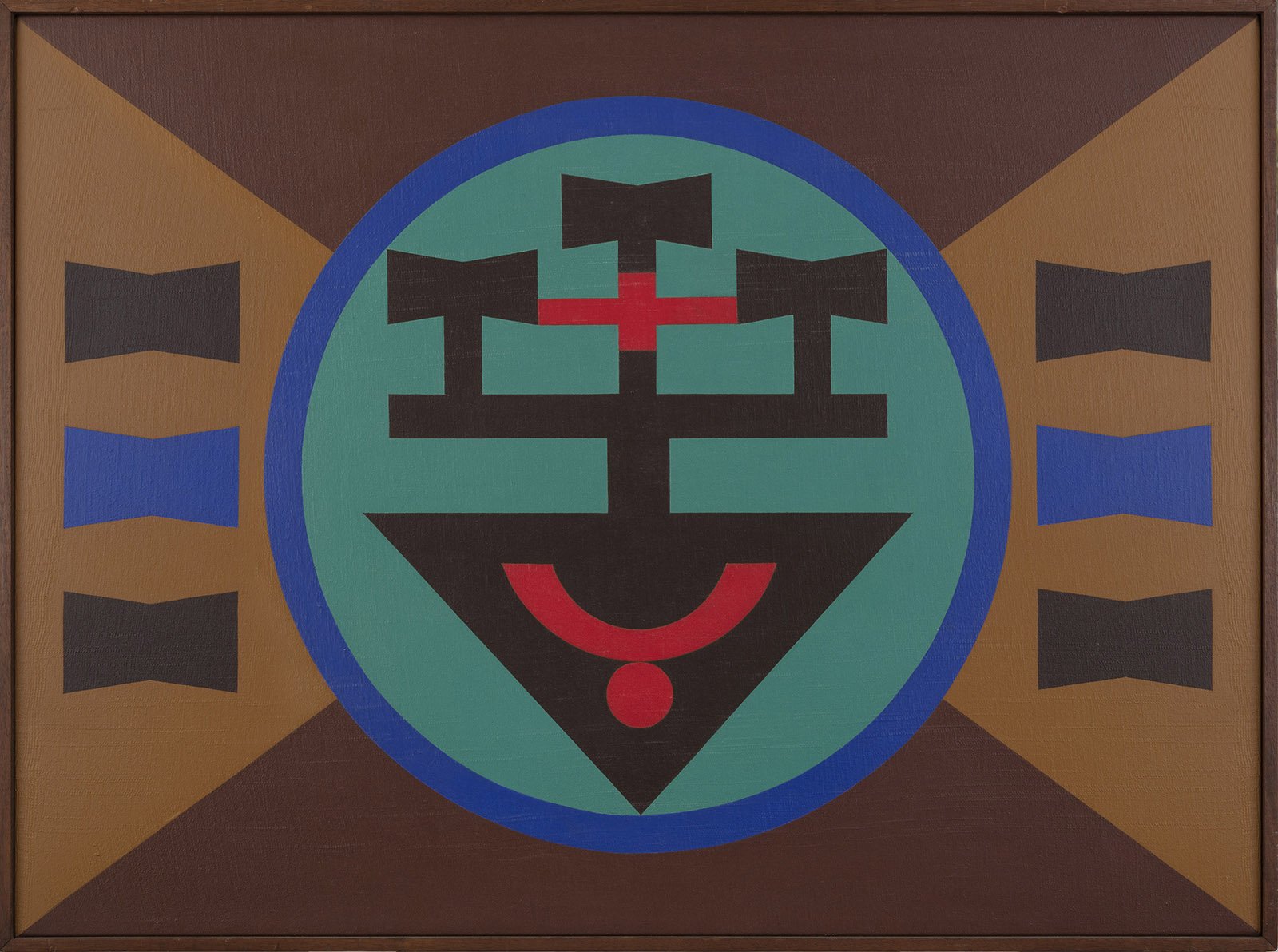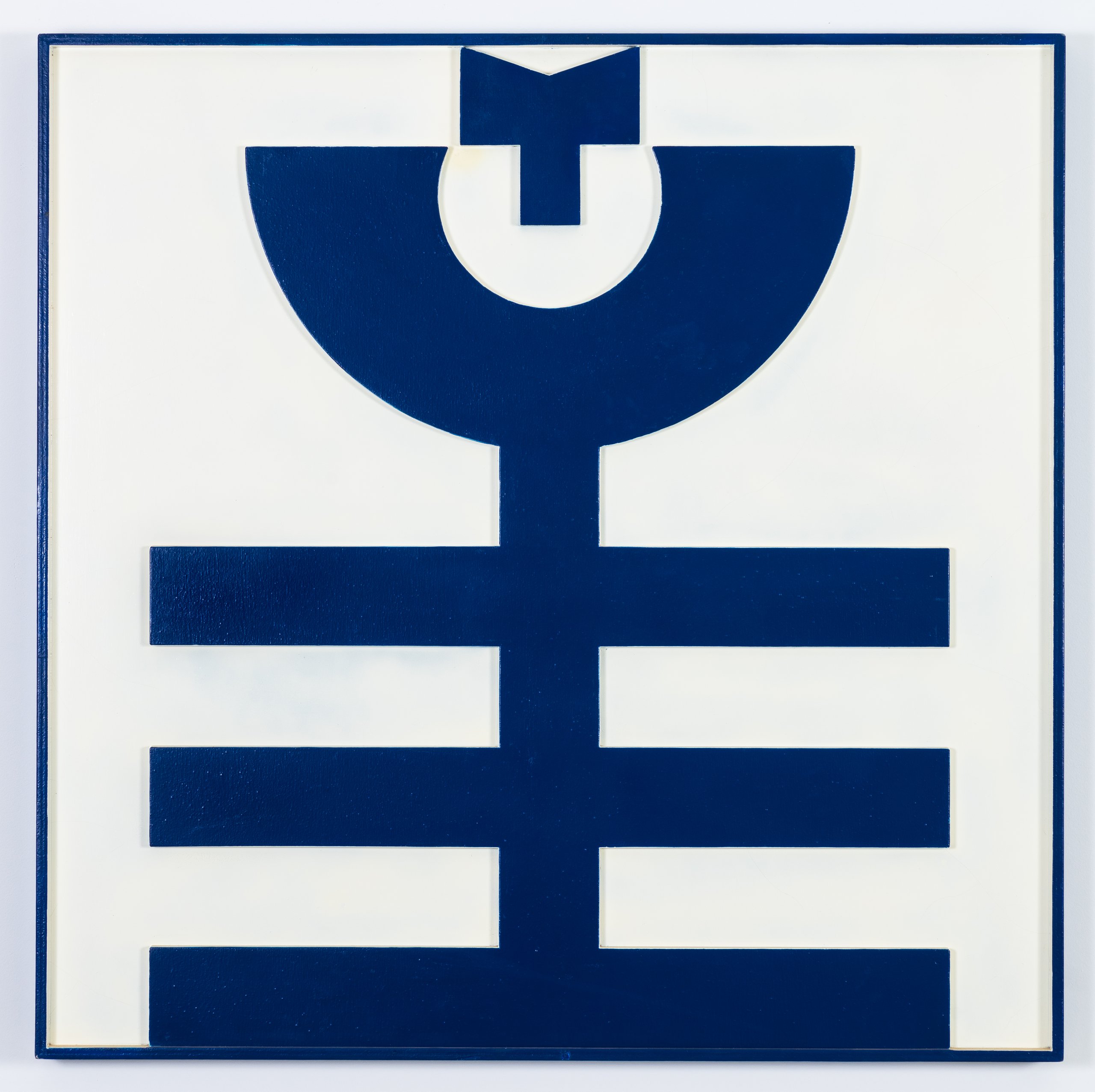Rubem Valentim
The poetics of Rubem Valentim are closely linked to his city of origin. Born in Salvador, the Brazilian capital with the largest presence and prominence of Afro-Brazilian culture, Valentim's life was permeated by the symbolism of African-based religions. He began painting in his childhood but started his professional career in the late 1940s, participating in a movement for the renewal of the arts in Bahia.
His works span various media such as painting, printmaking, sculpture, and relief, standing out for the symbolic use of colors related to the orixás, associated with geometric forms. The artist avoids formalist readings, connecting the emblems that constitute his works with their sacred origins. Active during the rise of concretism and neoconcretism in Brazil, Valentim never associated himself with any group or movement.
Valentim received a travel award at the 11th National Salon of Modern Art, which allowed him to live in Europe between 1963 and 1966. He was the first black artist to hold a solo exhibition outside of Brazil, in 1965, at the Brazilian Embassy in Italy, Palazzo Pamphilj. A solo exhibition titled Rubem Valentim: A Riscadura Brasileira was held at the same location in 2022.
He participated in the Venice Biennale in 1962 and in several editions of the São Paulo International Biennial, from 1955 to the 2020s. He was part of the 1st World Festival of Black Arts in Senegal in 1966. Retrospectives of his work have been held at the São Paulo Museum of Art (MASP) and the Pinacoteca do Estado de São Paulo, among other spaces. His works are included in important institutional collections in Brazil and abroad, such as the Afro-Brazilian Museum Emanoel Araújo, the Pinacoteca do Estado de São Paulo, the Museum of Modern Art of São Paulo (MAM SP), the São Paulo Museum of Art Assis Chateaubriand (MASP), Guggenheim Abu Dhabi, the Museum of Modern Art (MoMA), and the National Gallery of Modern Art in Rome, among others.




